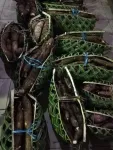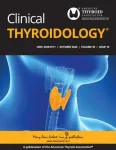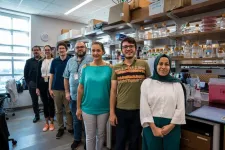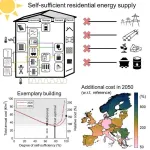(Press-News.org)
Evanston, IL. --- A team of researchers from the Mirkin Group at Northwestern University’s International Institute for Nanotechnology in collaboration with the University of Michigan and the Center for Cooperative Research in Biomaterials- CIC biomaGUNE, unveils a novel methodology to engineer colloidal quasicrystals using DNA-modified building blocks. Their study will be published in the journal Nature Materials under the title "Colloidal Quasicrystals Engineered with DNA."
Characterized by ordered yet non-repeating patterns, quasicrystals have long perplexed scientists. "The existence of quasicrystals has been a puzzle for decades and their discovery appropriately was awarded with a Nobel Prize," said Chad Mirkin, the study's lead researcher. "Although there are now several known examples, discovered in nature or through serendipitous routes, our research demystifies their formation and more importantly shows how we can harness the programmable nature of DNA to design and assemble quasicrystals deliberately."
The focal point of the study was the assembly of decahedral nanoparticles (NPs) – particles with ten sides – utilizing DNA as a guiding scaffold. Through a combination of computer simulations and meticulous experiments, the team unearthed a remarkable discovery: these decahedral NPs can be orchestrated to form quasicrystalline structures with intriguing five- and six-coordinated motifs, ultimately culminating in the creation of a dodecagonal quasicrystal (DDQC).
"Decahedral nanoparticles possess a distinctive five-fold symmetry that challenges the conventional periodic tiling norms," Mirkin said. "By leveraging the programmable capabilities of DNA, we were able to direct the assembly of these nanoparticles into a robust quasicrystalline structure."
The researchers functionalized decahedral gold nanoparticles with short, double-stranded DNA, and implemented a precisely controlled cooling process to facilitate the assembly. The resultant quasicrystalline superlattices exhibited medium-range quasiperiodic order, with rigorous structural analyses confirming the presence of twelve-fold symmetry and a distinctive triangle-square tiling pattern, hallmark features of a DDQC.
“Interestingly, the simulations discovered that, unlike most axial quasicrystals, the tiling pattern of the layers in the decahedron quasicrystal do not repeat identically from one layer to the next. Instead, a significant percentage of the tiles are different, in a random way. This randomness produces a disorder that helps to stabilize the crystal,” said Sharon Glotzer, co-corresponding author of the study and chair of the department of chemical engineering at the University of Michigan.
The implications of this breakthrough are far-reaching, offering a potential blueprint for the controlled synthesis of other complex structures previously considered beyond reach. As the scientific community delves into the boundless prospects of programmable matter, this research paves the way for transformative advancements and applications in diverse scientific domains.
"Through the successful engineering of colloidal quasicrystals, we have achieved a significant milestone in the realm of nanoscience. Our work not only sheds light on the design and creation of intricate nanoscale structures but also opens a world of possibilities for advanced materials and innovative nanotechnology applications," said Luis Liz-Marzán, a senior coauthor of the study from CIC biomaGUNE.
Liz-Marzán and Glotzer, are co-authors of the paper.
Founded in 2000 as an umbrella organization to coalesce and foster nanotechnology efforts, the IIN represents and unites more than $1 billion in nanotechnology research, educational programs, and supporting infrastructure
END
Images
Nanoengineers have created a quasicrystal—a scientifically intriguing and technologically promising material structure—from nanoparticles using DNA, the molecule that encodes life.
The team, led by researchers at Northwestern University, the University of Michigan and the Center for Cooperative Research in Biomaterials in San Sebastian, Spain, reports the results in Nature Materials.
Unlike ordinary crystals, which are defined by a repeating structure, the patterns in quasicrystals don't repeat. Quasicrystals built from atoms can have exceptional properties—for ...
Destructive winds that flow out of thunderstorms in the central United States are becoming more widespread with warming temperatures, according to new research by the U.S. National Science Foundation (NSF) National Center for Atmospheric Research (NCAR).
The new study, published this week in Nature Climate Change, shows that the central U.S. experienced a fivefold increase in the geographic area affected by damaging thunderstorm straight line winds in the past 40 years. The research uses a combination of meteorological observations, very high-resolution computer modeling, and analyses of fundamental ...
Climate change is impeding the human rights of a large group of people living in the Pacific, a recent report in Nature reveals.
The paper substantiates a submission to the International Court of Justice (ICJ) on the legal responsibility of countries to act on climate change.
Evidence gathered in Vanuatu supports a clarification on loss and damage finance which could activate powerful legal tools to hold polluters accountable.
Research Fellow at the Griffith University Climate Action Beacon, Dr Ross Westoby said the report explores how climate-induced loss and damage in the Pacific is already occurring and outlines ...
NEW YORK, November 2, 2023 — Harnessing and controlling light is vital for the development of technology, including energy harvesting, computation, communications, and biomedical sensing. Yet, in real-world scenarios, complexity in light's behavior poses challenges for its efficient control. Physicist Andrea Alù likens the behavior of light in chaotic systems to the initial break shot in a game of billiards.
“In billiards, tiny variations in the way you launch the cue ball will lead to different patterns of the balls bouncing around the table,” said Alù, Einstein ...
It’s a multi-billion dollar question: What will happen to water as temperatures continue to rise? There will be winners and losers with any change that redistributes where, when and how much water is available for humans to drink and use.
To find answers and make informed predictions, scientists look to the past. Reconstructions of past climate change using geologic data have helped to show the far-reaching influence of human activity on temperatures since the Industrial Age. But assembling hydroclimate records for the same timeframe has proved to be much harder.
A study from the Past Global Changes (PAGES) Iso2k project team, ...
Metabolites called nucleotides are the building blocks of DNA and can impact cancer’s sensitivity or resistance to chemotherapy and radiation in brain cancer.
Findings from researchers at the University of Michigan Health Rogel Cancer Center, published in Cancer Discovery, show how a specific nucleotide metabolite, called GTP, controls responses to radiation and chemotherapy in an unexpected way.
“We learned that if you increase a cell’s GTP levels, it makes it really resistant to ...
The American Thyroid Association® (ATA®) is pleased to announce that Trevor E. Angell, MD has been selected as the new Editor-in-Chief of the ATA monthly journal Clinical Thyroidology®. Dr. Angell’s term as Editor-in-Chief will begin in January 2024.
Clinical Thyroidology is one of the ATA’s official journals and is published in partnership with Mary Ann Liebert, Inc. This highly valued abstract and commentary publication provides a comprehensive look at clinical thyroid literature. Experts ...
Researchers at MUSC Hollings Cancer Center believe that some drugs already approved by the U.S. Food and Drug Administration or currently in clinical trials could be repurposed for certain breast cancer patients whose cancer has become resistant to standard therapies.
Ozgur Sahin, Ph.D., a professor and SmartState Endowed Chair in the Department of Biochemistry and Molecular Biology, led the research, which was published Nov. 2 in Nature Communications.
The research, funded by an American Cancer Society Research Scholar Grant, started as an investigation into cancer resistance to the drug tamoxifen but expanded as the research questions led down new ...
It all began with basic research: While conducting laboratory experiments, a team at the Technical University of Munich (TUM) came across an active agent against multidrug-resistant bacteria with a fundamental difference to antibiotics developed to date. The researchers have since established a start-up to develop a new drug based on this agent. The entrepreneurs have now been nominated for Science Breakthrough of the Year in the Science Start-Up category at the international Falling Walls summit.
Rising numbers of bacteria are developing ...
Researchers report that 53% of European freestanding homes could have supplied all their own energy needs in 2020 using only local rooftop solar radiation, and this technical feasibility could increase to 75% in 2050. Publishing November 2 in the journal Joule, the study shows that there is no economic advantage for individual households to be fully self-sufficient under current or future conditions, though in some cases the costs are on par with remaining on-grid. The researchers estimate that self-sufficiency will be economically feasible for 5% (two million) of Europe’s 41 million freestanding single-family homes in 2050, ...




